
USER MANUAL
Series:
QPL
92
14RT
ATTENTION!
DANGER!
Read all safety rules carefully before attempting to operate. Retain for
future reference.
Never operate this unit when flammable materials or
vapors are present because electrical devices produce
arcs or sparks that can cause a fire or explosion. NEVER
OPERATE UNATTENDED!
For your records, please record the following information
and store this user manual in a safe location.
Catalog No.
Model No.
Purchase Date:
(Located on the carton)
(Located on top portion of the vacuum)
87557-68
Commercial/Industrial use
WET/DRY VACUUM

TABLE OF CONTENTS
Important Safety Instructions .............................................................................................
Grounding Instructions ....................................................................................................
Extension Cords .................................................................................................................
Unpacking .........................................................................................................................
Assembly ........................................................................................................................
Set Up and Operation .........................................................................................................
Filter Installation and Maintenance ................................................................................
Blower Feature ................................................................................................................
Empty Liquid Waste From the Tank ..................................................................................
Automatic Suction Shut Off ..............................................................................................
Lubrication .......................................................................................................................
Storage ............................................................................................................................
Service ............................................................................................................................
Troubleshooting ................................................................................................................
Warranty ..................................................................................................................... .....
Contact Us. ......................................................................................................................
3
3-4
4
4
5-9
9
9-12
12
12
12
13
13
13
13
14
14
SECTION PAGES
TOOLS NEEDED
PAGE 2
• Safety Glasses
•
5
/16” and
1
/2” Wrench or socket
(Not needed with all vacuums)
• Flathead Screwdriver

IMPORTANT SAFETY INSTRUCTIONS
When using an electric appliance, basic precautions should always be followed, including the following:
READ ALL INSTRUCTIONS BEFORE USING THIS APPLIANCE.
WARNING – TO REDUCE THE RISK OF FIRE, ELECTRIC SHOCK OR INJURY:
1. Do not leave appliance when plugged in. Unplug from outlet when not in use and before servicing.
Connect to a properly grounded outlet only. See Grounding Instructions.
2. Do not expose to rain – store indoors.
3. Do not allow to be used as a toy. Close attention is necessary when used by or near children.
4. Use only as described in this manual. Use only Manufacturer’s recommended attachments.
5. Do not use with damaged cord or plug. If appliance is not working as it should, has been dropped,
damaged, left outdoors or dropped into water, contact Shop-Vac Corporation for assistance.
6. Do Not: pull or carry by cord, use cord as a handle, close a door on cord or pull cord around sharp edges
or corners. Do not run appliance over cord. Keep cord away from heated surfaces.
7. Do not unplug by pulling on cord. To unplug, grasp the plug; not the cord.
8. Do not handle plug or appliance with wet hands.
9. Do not put any object into openings. Do not use with any openings blocked; keep free of dust, lint, hair
and anything that may reduce air flow.
10. Keep hair, loose clothing, fingers and all parts of body away from openings and moving parts.
11. Do not pick up anything that is burning or smoking, such as cigarettes, matches or hot ashes.
12. Do not use without dust bag and/or filters in place.
13. Turn off all controls before unplugging.
14. Use extra care when cleaning on stairs.
15. Do not use to pick up flammable or combustible liquids such as gasoline or use in areas where they
may be present.
16. Do not use your cleaner as a sprayer of flammable liquids such as oil base paints, lacquers, household
cleaners, etc.
17. Do not vacuum toxic, carcinogenic, combustible or other hazardous materials such as asbestos, arsenic,
barium, beryllium, lead, pesticides or other health endangering materials. Specially designed units are
available for these purposes.
18. Do not pick up soot, cement, plaster or drywall dust without cartridge filter and collection filter bag in
place. These are very fine particles that may pass through the foam and affect the performance of the
motor or be exhausted back into the air. Additional collection filter bags are available.
19. Do not leave the cord lying on the floor once you have finished the cleaning job. It can become a tripping
hazard.
20. Use special care when emptying heavily loaded tanks.
21. To avoid spontaneous combustion, empty tank after each use.
22. The operation of a utility vac can result in foreign objects being blown into eyes, which can result in eye
damage. Always wear safety goggles when operating vacuum.
23. STAY ALERT. Watch what you are doing and use common sense. Do not use vacuum cleaner when you
are tired, distracted or under the influence of drugs, alcohol or medication causing diminished control.
24. WARNING! Do NOT use this vacuum cleaner to vacuum lead paint debris because this may disperse fine
lead particles into the air. This vacuum cleaner is not intended for use under EPA Regulation 40 CFR Part
745 for lead paint material cleanup.
SAVE THESE INSTRUCTIONS
WARNING
– DO NOT LEAVE VACUUM UNATTENDED
WHEN IT IS PLUGGED IN AND/OR OPERATING. UNPLUG UNIT WHEN NOT IN
USE.
GROUNDING INSTRUCTIONS
This appliance must be grounded. If it should malfunction or breakdown, grounding provides a path of
least resistance for electric current to reduce the risk of electric shock. This appliance is equipped with
a cord having an equipment-grounding conductor and grounding plug. The plug must be inserted into an
appropriate outlet that is properly installed and grounded in accordance with all local codes and ordinances.
PAGE 3

GROUNDING INSTRUCTIONS (CONT’D.)
WARNING
– IMPROPER CONNECTION OF THE EQUIPMENT-GROUNDING
CONDUCTOR CAN RESULT IN A RISK OF ELECTRIC SHOCK. CHECK WITH A QUALIFIED
ELECTRICIAN OR SERVICE PERSON IF YOU ARE IN DOUBT AS TO WHETHER THE OUTLET IS
PROPERLY GROUNDED. DO NOT MODIFY THE PLUG PROVIDED WITH THE APPLIANCE – IF
IT WILL NOT FIT THE OUTLET, HAVE A PROPER OUTLET INSTALLED BY A QUALIFIED
ELECTRICIAN.
This appliance is for use on a nominal 120-volt circuit, and has a grounded plug that looks like the plug
illustrated in sketch A. A temporary adaptor that looks like the adaptor illustrated in sketches B and C may
be used to connect this plug to a 2-pole receptacle as shown in sketch B if a properly grounded outlet is
not available. The temporary adaptor should be used only until a properly grounded outlet (sketch A) can
be installed by a qualified electrician. The green colored rigid ear, lug or the like extending from the adaptor
must be connected to a permanent ground such as a properly grounded outlet box cover. Whenever the
adaptor is used, it must be held in place by a metal screw.
IN CANADA, THE USE OF A TEMPORARY ADAPTOR IS NOT PERMITTED BY THE CANADIAN ELECTRICAL
CODE. Make sure that the appliance is connected to an outlet having the same configuration as the plug. No
adaptor should be used with this appliance.
EXTENSION CORDS
When using the appliance at a distance where an extension cord becomes necessary, a
3-conductor grounding cord of adequate size must be used for safety, and to prevent loss
of power and overheating. Use Table A to determine A.W.G. wire size required. To determine
ampere rating of your vacuum, refer to nameplate located on motor housing. Before using
appliance, inspect power cord for loose or exposed wires and damaged insulation. Make any needed repairs
or replacements before using your appliance. Use only three-wire outdoor extension cords which have
three prong grounding-type plugs and three-pole receptacles which accept the extension cord’s plug. When
vacuuming liquids, be sure the extension cord connection does not come in contact with the liquid.
NOTE: STATIC SHOCKS ARE COMMON IN DRY AREAS OR WHEN THE RELATIVE HUMIDITY OF THE AIR IS
LOW. THIS IS ONLY TEMPORARY AND DOES NOT AFFECT THE USE OF THE APPLIANCE. TO REDUCE THE
FREQUENCY OF STATIC SHOCKS IN YOUR HOME, THE BEST REMEDY IS TO ADD MOISTURE TO THE AIR WITH
A CONSOLE OR INSTALLED HUMIDIFIER.
UNPACKING
Remove vacuum cleaner and all accessories from the carton. Important: Open tank cover by pushing latches
or clamps outward with thumbs and remove any accessories that may have been shipped in the tank.
Volts
Total length of cord in feet
120V
Ampere Rating
More Not More
Than Than
0 - 6
6 - 10
10 - 12
12 - 16
25 50 100
150
AWG
18
18
16
14
16
16
16
12
16
14
14
14
12
12
Not recommended
TABLE A
PAGE 4
SKETCH A SKETCH B SKETCH C
GROUNDING METHODS

PAGE 5
ASSEMBLY
CASTER SYSTEM
Follow the instructions for the caster system that came with your vacuum.
PLASTIC TANK WITH CASTER FEET
You will find four caster feet, four casters and four screws with your vacuum. Assemble as
follows:
1. With cord disconnected from receptacle and tank cover removed, turn tank upside down
so that bottom is facing up.
2. With front of tank facing you, take caster feet marked with the
letter A and place in slots on left front and right rear of tank also marked with
the letter A. Secure with screws provided.
3. Take caster feet marked with the letter B and place in slots on right front and
left rear of tank also marked with the letter B. Secure with screws provided.
4. If flat washers are included in hardware package place flat washer over stem of caster before installing
casters into feet. NOTE: Flat washers are not required with all units.
5. Insert casters into feet by placing stem of caster into holes provided. Apply
pressure and twisting motion until casters snap into place. Return tank to
upright position.
PLASTIC TANK WITH REAR CASTER BASKET
You will find four casters, two caster feet, one basket and four screws with your wet/dry vacuum.
If your caster basket looks like the one shown to the right, assemble as follows.
1. With cord disconnected from receptacle and tank cover removed, turn tank upside down so that the
bottom is facing up.
2. Insert two caster feet into adjacent slots at front of tank. Secure with screws provided.
3. Take basket and place into remaining slots at back of tank. Secure with screws
provided.
4. Install casters into basket and feet by inserting the caster stems into the holes provided. Apply pressure
and twisting motion until casters snap into place.
5. If flat washers are included in hardware package place flat washer over stem of caster before installing
casters into feet or basket. NOTE: Flat washers are not required with all units.
Caster
Foot
Screw
Caster
Foot
Screw
Caster
Caster
Foot

ASSEMBLY (CONT’D.)
If your caster basket looks like the one shown to the right, assemble as follows.
1. With cord disconnected from receptacle and tank cover removed, turn tank upside
down so that the bottom is facing up.
2. Take basket and place into slots (on rear of tank opposite of drain). Secure with
screws provided.
3. With tank drain facing you, take caster foot marked with the letter A and place
in slot on left side of tank also marked with the letter A. Secure with screw
provided.
4. Take caster foot marked with the letter B and place in slot on right side of tank
also marked with the letter B. Secure with screw provided.
5. If flat washers are included in hardware package place flat washer over stem of caster before installing
casters into feet or basket. NOTE: Flat washers are not required with all units.
6. Install casters into caster feet and basket by inserting the
caster stems into the holes provided. Apply pressure and
twisting motion until caster snap into place.
PLASTIC TANK WITH REAR CASTER DOLLY
You will find four casters, two caster feet, one dolly and four screws with your wet/dry vacuum.
Some units come with an accessory basket. This is not standard on all models.
1. With cord disconnected from receptacle and tank cover removed, turn tank upside down so
that the bottom is facing up.
2. Take rear caster dolly and place into slots (on rear of tank, opposite of drain
and secure with screws provided.
3. If flat washers are included in hardware package place flat washer over stem of caster before installing
casters into feet and dolly. NOTE: Flat washers are not required with all units.
4. Insert casters into bottom of rear caster dolly by placing stem of caster into holes
provided. Apply pressure and twisting motion until casters snap into place.
Caster
Foot
Screw
Caster
Foot
Screw
Caster
Caster
Foot
PAGE 6

PAGE 7
ASSEMBLY (CONT’D.)
5. With tank drain facing you, take caster foot marked with the letter A and place
in slot on left side of tank also marked with the letter A and secure with screw
provided.
6. Take caster foot marked with the letter B and place in slot on right side of
tank also marked with the letter B and secure with screw provided.
7. Insert casters into feet by placing stem of caster into holes provided. Apply pressure
and twisting motion until casters snap into place.
8. Return tank to upright position.
9. If an accessory basket came with your unit, place basket with curved surface against
tank on rear caster dolly assembly. Push downward until basket snaps onto dolly. The
basket is not included with all models.
PLASTIC TANK WITH REAR WHEEL BASKET
You will find two casters, two large rear wheels, one axle, rear dolly/basket, two caster feet,
four screws, two washers, two hair pin clips. If your vacuum is 16 U.S. gallons (60.5 liters)
or larger you will also find two screws, two metal flat washers and two square nuts with
your wet/dry vacuum.
Assemble as follows:
1. With cord disconnected from receptacle and tank cover removed, turn tank upside
down so that the bottom is facing up.
2. Place one hair pin clip in one end of axle. Slide one washer down the length of the
axle to rest on the hair pin clip. Slide wheel onto axle next to washer. Be sure flat side
of wheel hub is facing outward.
3. Slide axle through holes provided in dolly/basket.
Caster
Foot
Screw
Caster
Foot
Screw

PAGE 8
ASSEMBLY (CONT’D.)
4. Slide remaining wheel then washer onto axle. Insert hair pin clip into remaining
hole in axle to hold wheel in place.
5. With front of tank facing you, take basket assembly and place into slots on back of
tank. Secure with screws provided.
6. Take caster foot marked with the letter A and place in slot on left front of tank
also marked with letter A. Secure with screw provided.
7. Take caster foot marked with the letter B and place in slot on right front of
tank also marked with the letter B. Secure with screw provided.
8. If flat washers are included in hardware package place flat washer over stem of caster before installing
casters into feet. NOTE: Flat washers are not required with all units.
9. Insert casters into feet by placing stem of caster into holes provided.
Apply pressure and twisting motion until casters snap into place. Return
tank to upright position.
CARRIAGE HANDLE
If your vacuum comes with a carriage handle, assemble as follows:
1. Stand tank in the upright position. Spread ends of carriage
handle (to prevent damage to tank) while placing them under
the side tank handles.
2. Align holes in carriage handle with holes in tank. Fasten
tightly with screws, washers and nuts provided. The rubber
side of the washers must be placed against the inside wall
of the tank to prevent leakage or loss of performance.
TOOL HOLDER
(Not standard with all models)
If your unit came with a tool holder, assemble as follows:
1. Set tank cover onto the tank. Position with back of tank cover facing you.
2. Press tabs of tool holder into the slots on mounting
lugs, located on back of tank cover.
Caster
Foot
Screw
Caster
Foot
Screw
Caster
Caster
Foot
Screw
Sealing Washer
Hex Head Locknut
Carriage Handle

PAGE 9
ASSEMBLY (CONT’D.)
3. Press down until tabs snap into place. Remove tank cover from tank and refer to the
set up and operation section.
SET UP AND OPERATION
DANGER
– This equipment incorporates parts such as switches, motors or the
like that tend to produce arcs or sparks that can cause an explosion. Do not pick up flammable,
combustible, or hot materials. Do not use around explosive liquids or vapors, as electrical devices
produce arcs or sparks which can cause a fire or explosion - do not use at filling stations or
anywhere gasoline is stored or dispensed.
1. Refer to the filter installation and maintenance section to make sure the correct
filters are installed for your cleaning operation.
2. Replace tank cover, and apply pressure with thumb to each latch until it snaps tightly
into place. Make certain all lid latches are clamped securely.
3. Insert machine hose end with locking nut into inlet located in the front of the tank.
Turn locking nut to tighten. Do not over-tighten.
4. Attach the desired cleaning accessory onto the accessory end of the hose. NOTE:
Many more useful tools are available at your local dealer or the Shop-Vac
®
website.
5. Plug the cord into the wall outlet. Your cleaner is ready for use.
I = ON, O = OFF
FILTER INSTALLATION AND MAINTENANCE
FILTRATION SYSTEM
There are a variety of filters available for your vacuum. There are cage filters that install onto the underside
of the tank cover and tank filters that install into the tank. The filters are grouped into three filtration
categories. General filtration is used for large debris; such as, wood chips, nails and gravel. Medium
filtration is used for medium debris; such as, dirt, sand and sawdust. Fine filtration is used for fine debris;
such as drywall dust, cold ash and cement dust. It is important to have the correct filters installed for your
cleaning operation to protect your vacuum motor. THE MOST EFFICIENT FILTRATION FOR YOUR VACUUM IS A
FINE FILTRATION CAGE FILTER WITH A FINE FILTRATION TANK FILTER.
NOTE: When using the vacuum to pick up very fine dust. It will be necessary to empty the tank and clean
the cage filter at more frequent intervals to maintain maximum pick up power or add a disposable filter bag.
DRY PICK UP OPERATION
NOTE: Never use the vacuum for dry pick up without a dry use filter installed. Using the vacuum without a
filter will cause dust to discharge from the blower port and cause damage to the motor.
WARNING – ALWAYS DISCONNECT THE PLUG FROM THE WALL OUTLET
BEFORE REMOVING THE TANK COVER.
Follow the instructions for the filter that came with your vacuum. Some filters mentioned do not come
standard with all vacuums. Additional filters are available at your local dealer or the Shop-Vac
®
website.
CARTRIDGE FILTER
The cartridge filter can be used for dry pick up and small quantities of wet pick up. Installation is the same
for both. When picking up fine dust or powders a high efficiency filter bag must be used with the cartridge
filter.
1. If a foam sleeve is installed on the lid cage, remove it by sliding it off the lid cage. NOTE: If the cartridge
filter has been used for wet pick up, it must be cleaned and dried before using it for dry pick up.

FILTER INSTALLATION AND MAINTENANCE
(CONT’D.)
2. With the tank cover in an upside down position, slide the cartridge down over the lid
cage, pushing until the filter seals against the cover.
3. Place the filter retainer into the top of the cartridge filter. Hold the tank cover with
one hand, turn the handle on the filter retainer clockwise to lock the filter into place.
4. To remove the filter for cleaning, hold the tank cover and turn the filter retainer
counter-clockwise to loosen and remove.
5. Slide the cartridge filter off the lid cage.
6. For standard cartridge filters and Ultra-Web
®
cartridge filters, clean the filter by shaking or gently
brushing off excess dirt. Extremely dirty filters may be cleaned with water by rinsing from the inside of
the filter. Dry completely (approximately 24 hours).
For CleanStream
®
Abrasive Resistant cartridge filter, tap end cap against hard surface to loosen debris.
Additional debris can be removed by rinsing outside surface of the filter with running water. Avoid
dampening inside of filter. Completely air dry after washing. IMPORTANT: DO NOT BRUSH. DO NOT
clean filter with abrasive materials or scrub between pleats. This will permanently damage the filters
ability to stop dust.
7. Check the filter for tears or small holes. If none are found, reinstall the filter. To prevent damage to your
vacuum, do not use a filter with a hole or tear.
NOTICE – This filter is made of high quality paper designed to stop small
particles of dust. The filter can be used for wet or dry pick up. A dry filter is necessary to
pick up dry material. If you use your vac to pick up dust when the filter is wet, the filter
will clog quickly and be very difficult to clean. The filter may become saturated when
picking up large quantities of liquid causing misting to appear in the exhaust air. At this
time, you should dry or change the filter to eliminate this occurrence. Please handle the
filter carefully when removing it for cleaning or when installing it. Check the filter for tears
or small holes. Even a small hole can cause dust to be exhausted. Do not use a filter with
holes or tears. Replace it immediately.
WARNING – KEEP FILTERS CLEAN. EFFICIENCY OF THE VACUUM IS LARGELY
DEPENDENT ON THE FILTER. A CLOGGED FILTER CAN CAUSE OVERHEATING AND POSSIBLY
DAMAGE THE CLEANER. CHECK THE FILTER PERIODICALLY AND REPLACE AS REQUIRED.
DISPOSABLE FILTER BAG
Use the disposable filter bag in conjunction with the cartridge filter for easy disposal of the debris. The bag
is not required for normal dry pick up. When picking up fine dust or powders a high efficiency filter bag
must be used. NOTE: For dry use only.
Follow the instructions that pertain to your vacuum.
TANK WITH STATIONARY INLET DEFLECTOR:
1. Make sure the cord is disconnected from the receptacle, tank cover is removed and the hose is
disconnected from tank inlet.
PAGE 10

PAGE 11
FILTER INSTALLATION AND MAINTENANCE
(CONT’D.)
2. Grasp the cardboard collar firmly and slide rubber guard onto inlet fitting as far as
possible.
3. When secured in place, expand the filter bag and position around the inside of the
tank.
TANK WITH REMOVABLE INLET DEFLECTOR:
1. Make sure the cord is disconnected from the receptacle, tank cover is removed and the hose is
disconnected from tank inlet.
2. Remove inlet deflector from deflector guide. NOTE: Hose must be removed before
inlet deflector can be taken out.
3. With the opening of the inlet deflector facing the left or right side of the filter bag,
slide filter bag collar over deflector matching notches of bag collar to tabs on inlet
deflector. Bag will only fit properly one way.
4. Slide deflector with filter bag attached into deflector guide.
5. Reinsert hose into inlet and tighten locking-nut. When secured in place expand bag and position around
inside of tank.
6. NOTE: When removing filter bag from tank, remove inlet deflector from filter bag collar and reinstall into
deflector guide. Inlet deflector should always be in place for any type of cleaning.
WARNING – FOR FINE DUST AND POWDERS.
When vacuuming fine dust, or powders of any kind (plaster, drywall dust, cold ashes, concrete dust, etc.)
a high efficiency drywall filter bag must be used. When vacuuming normal household dust and debris,
standard household disposable filter bags may be used.
WET PICK UP OPERATION
1. Your vacuum can be used for wet pick up. Remove ALL dirt and debris found in the tank. Remove all dry
use filters, including the filter bag, from the vacuum.
2. A clean cartridge filter may be used to pick up small quantities of liquid. To use the cartridge filter; follow
the instructions under dry pick up.
3. For vacuuming large quantities of liquid use a foam sleeve. If a foam sleeve did not come standard with
your unit, one may be purchased at your local dealer, the Shop-Vac
®
website or by contacting Shop-Vac
®
customer service. To use the foam sleeve; follow the instructions in this section.
4. Misting in the exhaust air or dripping of liquid around the tank cover may occur if the filter becomes
saturated during wet pick up. If this occurs, remove the filter and allow to dry, or replace with another dry
filter.
5. Turn the unit off immediately upon completing a wet pick up job or when tank is full and ready to be
emptied. When the tank is full, suction will drastically reduce. Refer to the automatic suction shut

FILTER INSTALLATION AND MAINTENANCE
(CONT’D.)
off section for more information. Raise the hose to drain any excess liquid into the tank. Follow the
instructions in the emptying liquid waste section.
6. Before storing the vacuum cleaner or using for dry pick up, clean and dry the interior of the tank and the
underside of the tank cover. Clean and allow the filters to dry completely.
7. Wet pick up accessories should be washed periodically; especially after picking up wet, sticky kitchen
accidents. This can be accomplished with a warm solution of soap and water.
FOAM SLEEVE
1. With the tank cover in an upside down position, slide the foam sleeve down over the
lid cage, pulling until foam sleeve completely covers the lid cage.
2. To clean the foam sleeve, side it up and off the lid cage. Shake excess debris off of the
foam sleeve with a rapid up and down movement.
3. Hold foam sleeve under running water for a couple minutes, rinsing from the inside of
the filter. A water wash is not always required, depending on the condition of the filter.
4. Check the filter for tears. If any are found, replace with a new filter.
BLOWER FEATURE
Your vacuum can be used as a powerful blower. To use the blower feature, clear the hose of any debris or
obstructions.
For vacuums with a blower port cover (not standard on all models), unscrew blower
port cover located on the back of tank cover. The blower port cover is equipped with
a retaining strap to prevent loss of the cover. NOTE: For maximum performance when
vacuuming, remove the blower port cover.
Insert machine hose end into blower port located on the back of the tank cover.
Twist the hose end slightly to tighten the connection. Caution should be used when using
as a blower due to the powerful force of air when using certain attachments.
WARNING – ALWAYS WEAR EYE PROTECTION TO PREVENT ROCKS OR
DEBRIS FROM BEING BLOWN OR RICOCHETING INTO THE EYES OR FACE WHICH CAN RESULT
IN SERIOUS INJURY.
EMPTYING LIQUID WASTE FROM THE TANK
To empty liquid waste from the tank, turn the vacuum off and remove the plug from the wall outlet. Follow
the instructions that pertain to your vacuum.
WITHOUT TANK DRAIN
Remove the tank cover and deposit the liquid waste in a suitable drain. Use side carry handles for lifting vac
when draining tank into drains that are located above floor level. After tank is empty, return the tank cover to
its original position.
WITH TANK DRAIN
Remove the drain cap and deposit the liquid waste in a suitable drain. Use side carry handles for lifting vac
when draining tank into drains that are located above floor level. After the tank is empty, return the drain
cap to it’s original position.
AUTOMATIC SUCTION SHUT OFF
The vacuum is equipped with an automatic suction shut-off that operates when picking up liquids. As the
level of the liquid rises in the tank, an internal float rises until it seats itself against a seal at the intake of
the motor, shutting off suction. When this happens, the motor will develop a higher than normal pitch noise
and the suction is drastically reduced. If this occurs, turn unit off immediately. Failure to turn unit off after
float rises and shuts off suction will result in extensive damage to the motor. To continue use, empty the
liquid waste from the tank as outlined in the previous section.
NOTE: IF ACCIDENTALLY TIPPED OVER, THE VACUUM COULD LOSE SUCTION, IF THIS OCCURS, TURN UNIT
OFF AND PLACE VAC IN UPRIGHT POSITION. THIS WILL ALLOW THE FLOAT TO RETURN TO ITS NORMAL
POSITION AND YOU WILL BE ABLE TO CONTINUE OPERATION.
PAGE 12

PAGE 13
LUBRICATION
No lubrication is necessary as the motor is equipped with lifetime lubricated bearings.
STORAGE
Before storing your vacuum the tank should be emptied and cleaned. Never allow liquids to sit in the tank
for any extended period of time. The vacuum should be stored indoors.
SERVICE
Do not attempt to service your Shop-Vac
®
wet/dry vacuum cleaner beyond that described in this manual.
Refer all other servicing to a qualified service center.
TROUBLESHOOTING
PROBLEM POSSIBLE CAUSES SOLUTION
Parts/accessories 1. Packed in tank 1. Check in tank
missing
Vacuum cleaner 1. No power at receptacle 1. Check for power
will not start 2. Defective switch 2. Contact Shop-Vac
®
customer service
3. Defective motor 3. Contact Shop-Vac
®
customer service
Dust discharging 1. Filter not installed/not installed 1. Properly install filter
from exhaust properly
2. Filter damaged 2. Replace filter
3. Filter clogged or dust is too fine 3. Use more efficient filter
4. Filter not functional 4. Clean or replace filter
Loss of suction 1. Loose hose connection 1. Tighten hose connection
2. Filter clogged 2. Clean or replace filter
3. Full tank 3. Empty tank
4. Hole in hose 4. Replace hose
Static shock 1. Dry environment 1. Add moisture to air (if
practical, use a console
or installed humidifier).
2. Relative humidity of air is low 2. This situation is temporary
and does not affect the use
of the vacuum cleaner.
WARNING – IF ANY OF THE MOTOR HOUSING PARTS SHOULD BECOME
DETACHED OR BROKEN, EXPOSING THE MOTOR OR ANY OTHER ELECTRICAL COMPONENTS,
OPERATION SHOULD BE DISCONTINUED IMMEDIATELY TO AVOID PERSONAL INJURY OR
FURTHER DAMAGE TO THE VACUUM. REPAIRS SHOULD BE MADE BEFORE REUSING THE
VACUUM.

PAGE 14
SHOP-VAC CORPORATION
2323 Reach Road, P.O. Box 3307
Williamsport, PA 17701-0307
(570) 326-3557
www.shopvac.com
SHOP-VAC CANADA
1770 Appleby Line
Burlington, Ontario L7L 5P8
(905) 335-9730
www.shopvac.ca
Shop Vac-México, S.A. de C.V.
Paseo de los Adobes 1081-3
Fraccionamiento Guadalajara Technology Park
Zapopan, Jalisco, México C.P. 45019
Patents Issued and Pending.
© 2018 Shop-Vac Corporation. All Rights Reserved.
ONE YEAR INDUSTRIAL/COMMERICAL WARRANTY
One year limited warranty
Shop-Vac
®
Corporation warrants the vacuum cleaner contained in this package for one year from the
date of purchase to correct by repair or parts replacement without charge any product defect due to faulty
material or workmanship. Should this product be used for rental service, a 90 day limited warranty will
apply. THIS WARRANTY DOES NOT COVER ACCESSORIES. Shop-Vac
®
assumes no responsibility for damage
or faulty performance caused by misuse or careless handling, or where repairs or modifications have been
made or attempted by others. Proof of purchase date is required. This warranty gives you specific legal
rights, and you may also have other rights which vary from state to state or province to province.
Customers in the United States: for product service contact Shop-Vac
®
Corporation Customer Service, at
(570) 326-3557 or go to www.shopvac.com/support. Visit www.shopvac.com for your vacuum’s parts
list schematic.
Customers in Canada: for product service return the complete unit, (transportation prepaid), to
the Authorized Shop-Vac
®
Service Centre nearest you. Visit www.shopvac.ca for a complete list of
authorized service centres in your area.
Customers in Mexico: for product service see paperwork that came with your unit.

MANUEL D’UTILISATION
Séries :
QPL
92
14RT
ATTENTION!
DANGER!
Lisez attentivement tous les règlements relatifs à la sécurité avant
d’essayer de faire fonctionner l’appareil. Conservez ce document
comme référence ultérieure.
Ne faites jamais fonctionner cet appareil en présence de
matières ou de vapeurs inflammables, car les dispositifs
électriques produisent des arcs électriques ou des étincelles
qui risqueraient de provoquer un incendie ou une explosion.
NE LAISSEZ JAMAIS L’APPAREIL EN FONCTIONNEMENT SANS
SURVEILLANCE!
À usage commercial et industriel
ASPIRATEUR SEC/HUMIDE
Pour vos dossiers, veuillez noter les renseignements suivants et
conserver ce mode d’emploi dans un endroit sûr.
N° de catalogue
N° de modèle
Date d’achat :
(Situé sur la boîte)
(Situé sur la partie supérieure de l’aspirateur)
87557-68

TABLE DES MATIÈRES
Directives importantes de sécurité ....................................................................................
Directives relatives à la mise à la terre ...............................................................................
Rallonges ........................................................................................................................
Déballage ..........................................................................................................................
Assemblage ....................................................................................................................
Configuration et le fonctionnement ..................................................................................
Installation et entretien du filtre ..................................................................................
Caractéristiques de la souffleuse ......................................................................................
Vidange des déchets liquides du réservoir ........................................................................
Arrêt automatique de l’aspiration ......................................................................................
Lubrification .....................................................................................................................
Rangement .......................................................................................................................
Entretien ...........................................................................................................................
Dépannage .......................................................................................................................
Garantie ............................................................................................................................
Contactez-nous ................................................................................................................
3
4
4-5
5
5-9
10
10-13
13
14
14
14
14
14
15
16
16
SECTION PAGES
• Lunettes de
sécurité
• Clé ou douille de
5
/16 po et
1
/2 po
(elles ne sont pas nécessaires
avec tous les aspirateurs)
• Tournevis à tête plate
OUTILS NÉCESSAIRES
PAGE 2

DIRECTIVES IMPORTANTES DE SÉCURITÉ
Lors de l’utilisation d’un appareil électrique, il faut toujours respecter des précautions de base notamment
celle-ci : LISEZ TOUTES LES DIRECTIVES AVANT L’UTILISATION DE CET APPAREIL.
AVERTISSEMENT- POUR RÉDUIRE LE RISQUE D’INCENDIE, DE
DÉCHARGE ÉLECTRIQUE OU DE BLESSURES :
1. Ne quittez pas l’appareil s’il est branché. Débranchez la fiche de la prise lorsque l’appareil n’est pas
utilisé et avant tout entretien. Branchez uniquement à une prise correctement mise à la terre. Consultez
les directives relatives à la mise à la terre.
2. N’exposez pas l’appareil à l’eau ou à la pluie - entreposez-le à l’intérieur.
3. Cet appareil n’est pas un jouet et ne doit pas être utilisé en tant que tel. Des précautions particulières
doivent être prises lorsqu’il est utilisé par des enfants ou à proximité.
4. Utilisez l’appareil uniquement comme décrit dans le présent manuel. Utilisez également uniquement les
accessoires recommandés par le fabricant.
5. N’utilisez pas l’appareil avec un cordon d’alimentation ou une fiche endommagé(e). Communiquez avec
le Service d’assistance de Shop-Vac
MD
si l’appareil ne fonctionne pas comme prévu, a subi un choc,
est endommagé, a été oublié à l’extérieur ou s’il a été immergé dans l’eau.
6. Ne pas : tirer sur le cordon d’alimentation ou transporter l’appareil par celui-ci, l’utiliser comme
poignée, fermer une porte sur le cordon ni le contraindre sur des bords tranchants ou des coins. Ne
passez pas l’appareil sur le cordon d’alimentation. Tenez le cordon d’alimentation à l’écart des surfaces
chauffées.
7. Ne tirez pas sur le cordon d’alimentation pour débrancher l’appareil. Pour ce faire, saisissez la fiche et
non le cordon d’alimentation.
8. Ne manipulez pas la fiche ou l’appareil avec des mains mouillées.
9. N’insérez aucun objet dans les ouvertures. N’utilisez pas l’appareil avec des ouvertures bloquées,
maintenez-les exemptes de poussières, de peluches, de cheveux ou de tous éléments qui pourraient
réduire l’admission d’air.
10. Tenez les cheveux, les vêtements amples, les doigts et toutes parties du corps à l’écart des ouvertures
et des pièces mobiles.
11. N’aspirez aucun élément qui brûle ou qui émet de la fumée comme des cigarettes, des allumettes ou
des cendres chaudes.
12. Ne faites pas fonctionner l’appareil sans le sac à poussière et/ou les filtres en position.
13. Éteignez toutes les commandes avant de le débrancher.
14. Soyez très attentif lors du nettoyage dans les escaliers.
15. N’utilisez pas l’appareil pour aspirer des liquides inflammables ou combustibles comme de l’essence.
Ne le faites pas fonctionner en présence de tels liquides.
16. N’utilisez pas l’aspirateur comme un vaporisateur de liquides inflammables comme des peintures à
base d’huile, des vernis-laques, des produits de nettoyage domestiques, etc.
17. N’aspirez pas de matières toxiques, cancérogènes, combustibles ou dangereuses comme de l’amiante,
de l’arsenic, du baryum, du béryllium, du plomb, des pesticides ou d’autres matières pouvant porter
atteinte à la santé. Des modèles sont spécialement conçus et offerts pour ces travaux.
18. N’aspirez pas de particules de suie ou de poussières de ciment, de plâtre ou de cloison sèche sans le
filtre à cartouche et le sac-filtre à poussière en position. Ces particules sont très fines et risquent de
passer à travers la mousse et ainsi nuire au rendement du moteur ou d’être rejetées dans l’atmosphère.
Des sacs-filtres à poussière supplémentaires sont offerts.
19. Une fois le service de nettoyage terminé, ramassez le cordon d’alimentation déployé sur le plancher. Il
risque de faire trébucher un passant.
20. Soyez particulièrement prudent lors de la vidange de réservoirs très pleins et lourds.
21. Pour éviter tout risque de combustion spontanée, videz le réservoir après chacune des utilisations.
22. L’utilisation d’un aspirateur utilitaire peut se solder par la projection de corps étrangers qui pourraient
blesser les yeux. Portez toujours des lunettes de sécurité lors de l’utilisation de l’aspirateur.
23. SOYEZ VIGILANT. Notez vos actions et vos déplacements et utilisez votre jugement. N’utilisez
pas l’aspirateur ménager si vous êtes fatigué, distrait ou sous l’influence de drogues, d’alcool de
médicaments qui risquent d’affaiblir vos facultés.
24. AVERTISSEMENT! Ne PAS utiliser cet aspirateur pour ramasser des débris de peinture à base de
plomb, car ceci peut disperser de fines particules dans l’air. Cet aspirateur n’est pas conçu pour
l’utilisation lors du nettoyage de matériel de peinture à base de plomb sous le règlement 40
CFR pièce 745 d’EPA.
PAGE 3

CONSERVEZ CES DIRECTIVES
AVERTISSEMENT
– NE LAISSEZ PAS L’ASPIRATEUR
SANS SURVEILLANCE S’IL EST BRANCHÉ OU EN FONCTIONNEMENT.
DÉBRANCHEZ L’APPAREIL LORSQU’IL N’EST PAS UTILISÉ.
DIRECTIVES RELATIVES À LA MI SE À LA TERRE
Cet appareil doit être mis à la terre. En cas de défectuosité ou de bris, la mise à la terre offre une voie de
moindre résistance pour le passage du courant électrique et réduit ainsi le risque de décharge électrique.
Cet appareil est muni d’un cordon d’alimentation doté d’un fil conducteur et d’une fiche mise à la terre. Il
faut insérer la fiche dans une prise correspondante adéquate correctement installée et mise à la terre en
conformité avec tous les codes et toutes les ordonnances locales en vigueur.
AVERTISSEMENT– UNE CONNEXION INCORRECTE DU CONDUCTEUR
DE TERRE DU MATÉRIEL PEUT CRÉER UN RISQUE DE DÉCHARGE ÉLECTRIQUE. VÉRIFIEZ
AUPRÈS D’UN ÉLECTRICIEN PROFESSIONNEL OU DE PERSONNEL QUALIFIÉ EN ENTRETIEN
ET RÉPARATION SI VOUS AVEZ DES DOUTES RELATIFS À LA BONNE MISE À LA TERRE
DE LA PRISE. NE MODIFIEZ PAS LA FICHE FOURNIE AVEC L’APPAREIL. SI ELLE N’EST
PAS COMPATIBLE AVEC LA PRISE, FAITES CHANGER LA PRISE PAR UN ÉLECTRICIEN
PROFESSIONNEL.
Cet appareil est conçu pour fonctionner sur un circuit de 120 volts de tension nominale et il est muni
d’une fiche mise à la terre semblable à celle illustrée au croquis A. Il est possible d’utiliser un adaptateur
temporaire semblable à celui illustré aux croquis B et C pour raccorder cette prise à un réceptacle bipolaire
comme illustré au croquis B, si une prise correctement mise à la terre n’est pas disponible. Utilisez cet
adaptateur temporaire jusqu’à l’installation d’une prise correctement mise à la terre (croquis A) par un
électricien professionnel. L’oreille ou la cosse rigide (ou un élément semblable) de couleur verte qui fait
saillie de l’adaptateur doit être raccordée à une mise à la terre permanente comme le couvercle d’une boîte
à prises correctement mise à la terre. À chacune des utilisations de l’adaptateur, il faut le fixer en place
avec une vis métallique.
AU CANADA, L’UTILISATION D’UN ADAPTATEUR PROVISOIRE N’EST PAS AUTORISÉE PAR LE CODE CANADIEN
DE L’ÉLECTRICITÉ. Assurez-vous que l’appareil est relié à une prise ayant la même configuration que la
fiche. Aucun adaptateur ne devrait être utilisé avec cet appareil.
RALLONGES
Lorsque vous passez l’aspirateur à une distance qui nécessite l’utilisation d’une rallonge, vous
devez utiliser un cordon de mise à la terre à 3 conducteurs de calibre adéquat pour assurer la
sécurité et empêcher la perte de puissance et la surchauffe de l’appareil. Utilisez le Tableau
A pour déterminer le calibre de fil AWG requis. Pour déterminer l’intensité nominale de votre
appareil, reportez-vous à la plaque située sur le capot du moteur. Avant d’utiliser l’appareil, inspectez le
cordon d’alimentation pour déceler les fils desserrés ou exposés et les dommages d’isolation éventuels.
Procédez à toutes les réparations et à tous les remplacements nécessaires avant d’utiliser votre appareil.
Utilisez uniquement les rallonges pour l’extérieur, à trois fils, munies de fiches de mise à la terre à trois
broches et les prises de courant trois pôles qui acceptent la fiche de la rallonge. Lorsque vous utilisez votre
aspirateur pour ramasser des liquides, assurez-vous que le branchement de la rallonge ne contacte pas le
liquide.
PAGE 4
MÉTHODES DE MISE À LA TERRE
CROQUIS A CROQUIS B CROQUIS C

Patte à
roulette
Vis
CONSERVEZ CES DIRECTIVES
REMARQUE : LES DÉCHARGES STATIQUES SONT COURANTES DANS LES ENDROITS SECS OU LORSQUE
L’HUMIDITÉ RELATIVE DE L’AIR EST FAIBLE. IL S’AGIT DE CONDITIONS TEMPORAIRES QUI N’AFFECTENT PAS
L’UTILISATION DE L’APPAREIL. LA MEILLEURE SOLUTION POUR RÉDUIRE LA FRÉQUENCE DES DÉCHARGES
STATIQUES DANS VOTRE MAISON CONSISTE À HUMIDIFIER L’AIR À L’AIDE D’UN HUMIDIFICATEUR À POSER
OU FIXE.
DÉBALLAGE
Sortir l’aspirateur et tous les accessoires de la boite en carton. Important : Ouvrir le couvercle de la cuve en
poussant sur les verrous avec les pouces. Sortir ensuite tous les accessoires qui se trouvent dans la cuve.
ASSEMBLAGE
SYSTÈME À ROULETTES
Suivez les instructions du système de roulettes fournies avec votre aspirateur.
RÉSERVOIR EN PLASTIQUE AVEC PATTES À ROULETTE
Vous trouverez quatre pattes à roulette, quatre roulettes et quatre vis avec votre aspirateur.
Assemblez comme suit :
1. Alors que le cordon est débranché de la prise et que le couvercle du réservoir est enlevé,
retournez le réservoir de sorte que le bas fait face vers le haut.
2. Tandis que l’avant du réservoir vous fait face, prenez les pattes
à roulette marquées de la lettre A et placez-les dans les fentes
du côté avant gauche et arrière droit du réservoir, également
marquées par la lettre A. Fixez-les avec les vis fournies.
3. Prenez les pattes à roulette marquées de la lettre B et placez-les dans les
fentes avant gauche et arrière droit du réservoir également marquées par la
lettre B. Fixez-les avec les vis fournies.
4. Si des rondelles plates sont comprises dans l’emballage de matériel, placez la rondelle sur la tige de la
roulette avant d’installer les roulettes dans les pattes. REMARQUE : Les rondelles ne sont pas requises
pour toutes les unités.
5. Insérez les roulettes dans les pattes à roulette en plaçant la tige de roulettes
dans les orifices prévus à cette fin. Appliquez une pression et un mouvement
de torsion jusqu’à ce que les roulettes s’enclenchent. Retournez le réservoir
en position verticale.
Patte à
roulette
Vis
Tension
Longueur totale de la
rallonge, en pieds
120V
Intensité nominale
0 - 6
6 - 10
10 - 12
12 - 16
25 50 100
150
AWG
(cabre américain normalisé de fils)
18
18
16
14
16
16
16
12
16
14
14
14
12
12
Non recommandé
Plus
de
Pas
Plus de
Tableau A
PAGE 5
Roulette
Patte à
roulette

ASSEMBLAGE (SUITE)
RÉSERVOIR DE PLASTIQUE AVEC PANIER ARRIÈRE SUR ROULETTES
Vous trouverez quatre roulettes, deux pattes à roulettes, un panier et quatre vis avec votre
aspirateur pour déchets secs/humides.
Si votre panier sur roulettes ressemble à celui illustré à droite,
assemblez-le comme suit :
1. Alors que le cordon est débranché de la prise et que le couvercle du réservoir est enlevé, retournez le
réservoir de sorte que le bas fait face vers le haut.
2. Insérez deux pieds à roulettes dans les fentes adjacentes à l’avant du réservoir. Fixez-les avec les vis
fournies.
3. Prenez le panier et placez-le sur les fentes restantes à l’arrière du réservoir. Fixez-les
avec les vis fournies.
4. Installez les roulettes dans les pattes et le panier en insérant les tiges des roulettes dans les orifices
prévus à cette fin. Appliquez une pression et un mouvement de torsion jusqu’à ce que les roulettes
s’enclenchent.
5. Si des rondelles plates sont comprises dans le jeu de montage, placez la rondelle sur la tige de la
roulette avant d’installer les roulettes dans les pattes. REMARQUE : Les rondelles ne sont pas requises
pour toutes les unités.
Si votre panier sur roulettes ressemble à celui illustré à droite, assemblez-le comme suit :
1. Alors que le cordon est débranché de la prise et que le couvercle du réservoir est enlevé, retournez le
réservoir de sorte que le bas fait face vers le haut.
2. Prenez le panier et placez-les dans les fentes (à l’arrière du réservoir du côté opposé
au drain). Fixez-les avec les vis fournies.
3. Tandis que le drain vous fait face, prenez la patte à roulette marquée de la
lettre A et placez-la dans la fente du côté gauche du réservoir, également
marquée par la lettre A, puis fixez-la avec la vis fournie.
4. Prenez la patte à roulette marquée de la lettre B et placez-la dans la fente du
côté droit du réservoir, également marquée par la lettre B, puis fixez-la avec la
vis fournie.
PAGE 6
Patte à
roulette
Vis
Patte à
roulette
Vis
La page est en cours de chargement...
La page est en cours de chargement...
La page est en cours de chargement...
La page est en cours de chargement...
La page est en cours de chargement...
La page est en cours de chargement...
La page est en cours de chargement...
La page est en cours de chargement...
La page est en cours de chargement...
La page est en cours de chargement...
La page est en cours de chargement...
La page est en cours de chargement...
La page est en cours de chargement...
La page est en cours de chargement...
La page est en cours de chargement...
La page est en cours de chargement...
La page est en cours de chargement...
La page est en cours de chargement...
La page est en cours de chargement...
La page est en cours de chargement...
La page est en cours de chargement...
La page est en cours de chargement...
La page est en cours de chargement...
La page est en cours de chargement...
La page est en cours de chargement...
La page est en cours de chargement...
-
 1
1
-
 2
2
-
 3
3
-
 4
4
-
 5
5
-
 6
6
-
 7
7
-
 8
8
-
 9
9
-
 10
10
-
 11
11
-
 12
12
-
 13
13
-
 14
14
-
 15
15
-
 16
16
-
 17
17
-
 18
18
-
 19
19
-
 20
20
-
 21
21
-
 22
22
-
 23
23
-
 24
24
-
 25
25
-
 26
26
-
 27
27
-
 28
28
-
 29
29
-
 30
30
-
 31
31
-
 32
32
-
 33
33
-
 34
34
-
 35
35
-
 36
36
-
 37
37
-
 38
38
-
 39
39
-
 40
40
-
 41
41
-
 42
42
-
 43
43
-
 44
44
-
 45
45
-
 46
46
Shop-Vac QPL60 Manuel utilisateur
- Catégorie
- Aspirateurs
- Taper
- Manuel utilisateur
dans d''autres langues
- English: Shop-Vac QPL60 User manual
- español: Shop-Vac QPL60 Manual de usuario
Documents connexes
-
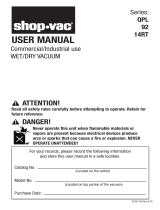 Shop Vac 92L400B Manuel utilisateur
Shop Vac 92L400B Manuel utilisateur
-
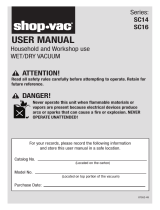 Shop Vac SC16-SQ550 Manuel utilisateur
Shop Vac SC16-SQ550 Manuel utilisateur
-
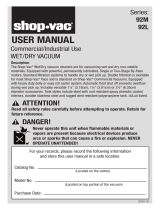 Shop Vac 92L2S100M Manuel utilisateur
Shop Vac 92L2S100M Manuel utilisateur
-
Shop Vac 92LSQ650 Manuel utilisateur
-
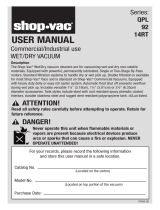 Shop Vac 92L400 Manuel utilisateur
Shop Vac 92L400 Manuel utilisateur
-
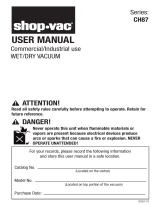 Shop Vac CH87-600C Manuel utilisateur
Shop Vac CH87-600C Manuel utilisateur
-
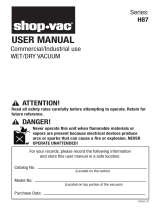 Shop Vac H87S600Cr Manuel utilisateur
Shop Vac H87S600Cr Manuel utilisateur
-
Shop-Vac H87S600Cr Manuel utilisateur
-
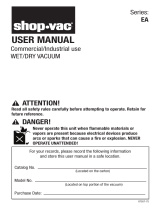 Shop Vac EA Series Manuel utilisateur
Shop Vac EA Series Manuel utilisateur
-
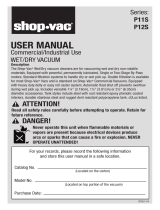 Shop Vac P12S-2S100 Manuel utilisateur
Shop Vac P12S-2S100 Manuel utilisateur























































